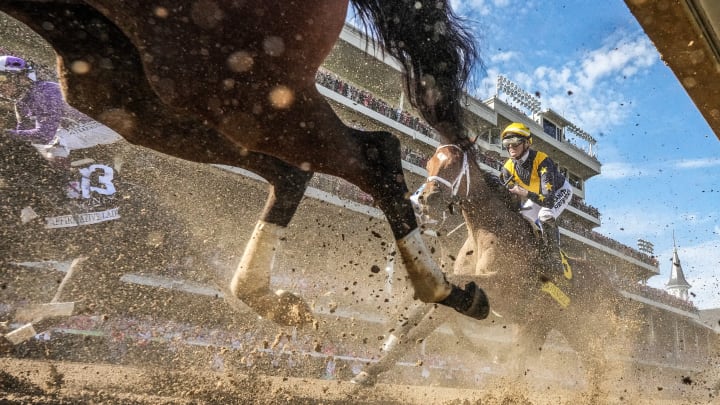Churchill Downs’ Decision to Suspend Racing Was the Only Responsible Move

Churchill Downs, the most tradition-steeped thoroughbred racetrack in America, bucked tradition in bombshell fashion Friday. It announced that it is shutting down its spring meet at the tragedy-scarred track and moving operations to Ellis Park in Henderson, Ky., next week. The meet will remain there through its conclusion in early July.
This is in response to a spate of horse deaths—12 of them in a month’s time—and it is a departure from the industry’s old-school mindset. For more than a century, racing tended to express brief dismay and then shrug off the fatal injuries that are a disturbing part of the sport. This is by no means a shrug-it-off action, and it underscores the new world in which racing is trying to survive and thrive.
The public is increasingly less inclined to simply accept dead horses as part of the deal, and nobody can blame them for that. With this spike in deaths, the home of the Kentucky Derby and the entire sport have come under increased scrutiny and blistering criticism—and they’re actually listening and reacting to it.
HISA—the Horseracing Integrity and Safety Authority—just came into being in 2023. It is making its presence felt during this initial crisis on its watch, jumping in alongside Churchill in investigating the equine deaths and testing the dirt and turf courses at the iconic Louisville landmark. HISA issued its own recommendation that Churchill temporarily suspend racing. The Kentucky Horse Racing Commission also was involved in the decision.
California led the way in aggressively approaching equine deaths after an appalling 42 horses were killed at Santa Anita Race Course in Arcadia in 2019. Deaths have gone way down in the state since then. Now, with Churchill facing its own disaster, extreme action is being taken.
“[N]o single factor has been identified as a potential cause and no discernable pattern has been detected to link the fatalities,” Churchill Downs Inc. said in a statement Friday. “Diagnostics testing of the racetrack by experts have not raised concerns and the experts have concluded that the surface is consistent with prior measurements from Churchill Downs in past years. Even though the investigations and expert reports have indicated no surface issues, in an abundance of caution, and in alignment with a recommendation from HISA, CDI has elected to relocate the meet in order to conduct a top-to-bottom review of all safety and surface protocols and integrity measures in collaboration and consultation with nationwide experts.”
However, this particular move also comes with one towering inconsistency: Churchill will still host racing through this weekend before shutting down the track. That includes a big race card Saturday, with six stakes races pitting high-quality horses running for big purses. If there is sufficient concern to warrant the moving of a small city of workers and animals two hours west, shouldn’t racing be halted immediately?
Many of the horsemen who make their living at Churchill for months at a time are not pleased with the decision. Relocating their operations abruptly, and uprooting their stable workers, is an on-the-fly complication of the highest order. Some are worried about their owners taking away their horses and moving them to other tracks.
They want to know: Was this an optics-based move to protect the Churchill brand, or a legitimate response to a crisis situation?
Rick Hiles of the Kentucky Horsemen’s Benevolent and Protective Society voiced dissent at the decision Friday: “Horsemen question the purpose of this unprecedented step, especially without conclusive evidence that there is a problem with the racetrack at Churchill Downs. We all want to find solutions that will improve safety for horses. However, we need to discuss allowing trainers and veterinarians to use therapeutic medications that greatly lessen the risk of breakdowns. Drastic steps, such as relocating an active race meet, should only be considered when it is certain to make a difference.”
The economic hit will extend to the businesses that surround the massive racetrack, and will impact Louisville’s tourism. Ellis Park, located just across the Ohio River from Evansville, Ind., has its charms—but it’s not a destination track on par with the legendary Twin Spires. And this is a bad development for Churchill season ticket holders, who just saw one of their primary summer social activities leave town.
But here’s the bottom line for a reeling sport that looks to Churchill Downs as an industry leader: Drastic action was probably necessary. Take a long, immersive, studious look at whatever has contributed to a dozen deaths in a month’s time.
The one thing that will kill horse racing is dead horses, and the old indifference is no longer an acceptable response. Blowing up an active racing meet isn’t a great idea unless it’s the only responsible idea.
